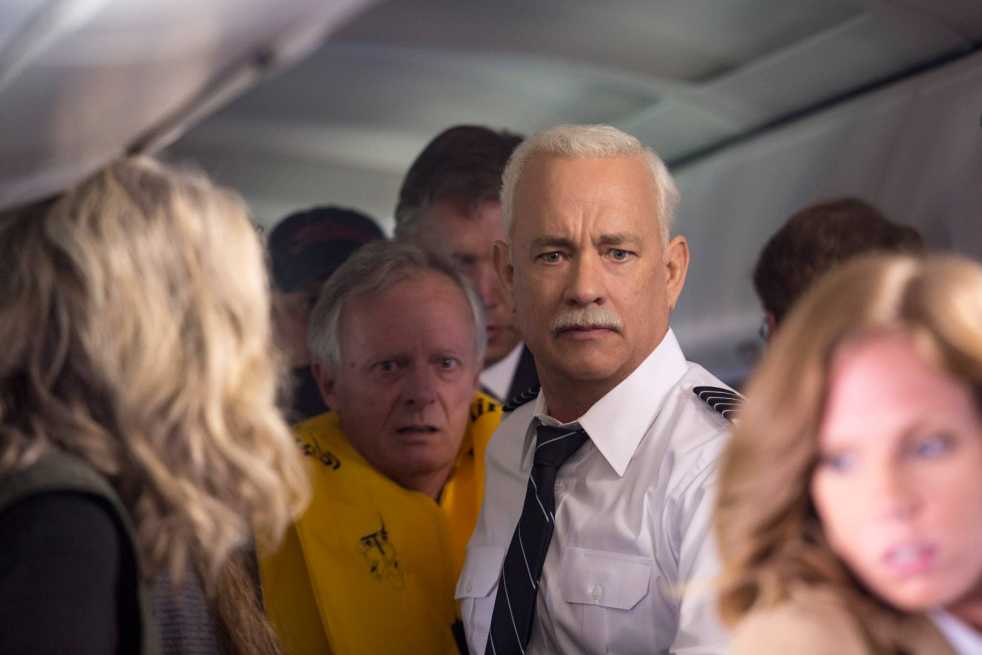How does a “hero” know that they made the right call?
This question has been the theme of recent comic book movies “Captain America: Civil War” and “Superman v. Batman: Dawn of Justice,” but “Sully” continues this year’s motto in a more non-fiction sense. Directed by Clint Eastwood (“American Sniper”), the film focuses on the pilot behind the Miracle on the Hudson, Capt. Chesley “Sully” Sullenberger (Tom Hanks, “Captain Phillips”), more than the actual event.
The movie begins by immediately and clearly communicating Sullenberger’s post-traumatic stress. By showing the pilot restlessly staring at news reports about the recent events, “Sully” challenges the expectations for how a “hero” should feel.
As actual news footage from the event rolls on the TV screen, audiences are told exactly what they need to know: Captain Sullenberger successfully saved the lives of all 155 passengers on US Airways Flight 1549 by landing the damaged plane onto the Hudson River on Jan. 15, 2009.
The film progresses by guiding moviegoers through a behind-the-scenes tour of the U.S. Airways Flight 1549 incident. Unseen by the public eye, an investigation into the landing for insurance purposes develops. The questioning of the efforts of Sullenberger by the bureaucratic National Transportation Safety Board (NTSB) paints the NTSB in a negative light.
Tests cited by the board suggest that the pilot had enough thrust to land at nearby airports. However, Sullenberger remains adamant that any option other than a water landing was impossible and would have been tragic. What follows is the struggle between the pilot’s instincts and a logistical calculation, up until the truth is finally revealed at the end of the film.
Although the conflict between the board and Sullenberger propels the plot, what makes this movie interesting is the conflict occurring within the pilot. The notion that heroes have trouble sleeping at night is intriguing, especially since the movie’s subject is a fairly recent event with an all-American tone to it.
The thought of anyone, let alone the hero himself, discounting actions that resulted in a best case scenario seems absurd, especially at the beginning of the film. But as evidence is found, the seed of doubt is planted; an atmosphere of uncertainty is created and remains for most of the film. Since events are mostly shown through the perspective of Sullenberger, insecurity in his decision only thickens that atmosphere until the audience is forced to choose a side.
Part of the reason this choice is so difficult is because of Tom Hanks’s performance. As always, Hanks plays the shaken all-American, and he only encourages audiences to believe in Sullenberger and his instincts. Some might criticize an almost stone-cold approach to the struggle that Hanks portrays, but the serious façade is another facet of the disciplined and experienced pilot. The world of the film is built around Sully, and for the most part, it is structurally sound.
While “Sully” is a modern take on the American hero style of film, by no means has it broken any new ground or innovated the medium. It is not perfect. First, the movie is based on
a rather brief timeline of events: the actual landing took mere minutes. Therefore, the movie’s 96-minute runtime relies on post-incident developments and reveals information about the landing in varying amounts.
About halfway through, the audience first sees the plane land on the Hudson, but one of the last scenes of the movie is a flashback that only differs in providing slightly more detail. This repetition feels as though it was an effort to pad the movie length.
Additionally, the antagonist’s motivation is vague. The audience is told that the harsh National Transportation Safety Board is unforgiving to Sullenberger in the name of insurance, but the magnitude of the board’s callousness closes in on unbelievably cruel and almost disrespectful. Drama between Sullenberger and the board feels unnecessarily forced.
“Sully” is a solid movie that knows what kind of story it has and how to tell it. By centering itself around a well-acted character, the movie fulfills its advertised promise of telling an “untold story,” but it offers more than a study of Capt. Sullenberger and the Miracle on the Hudson. “Sully” is an examination of the modern hero in a context that anyone, especially flight enthusiasts or those familiar with the incident, would find enjoyable and intriguing to watch on the big screen.
